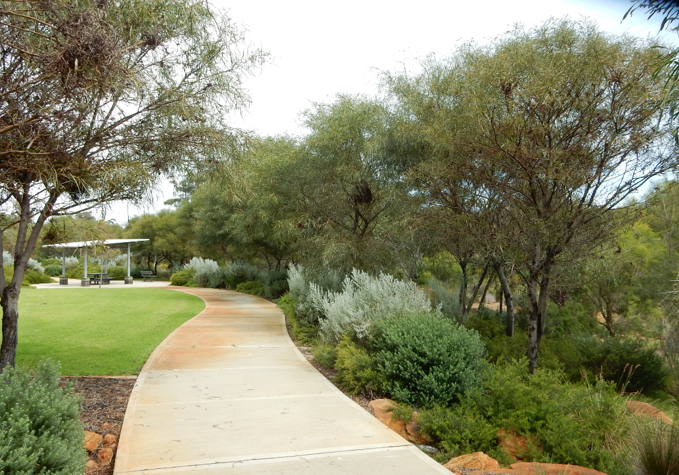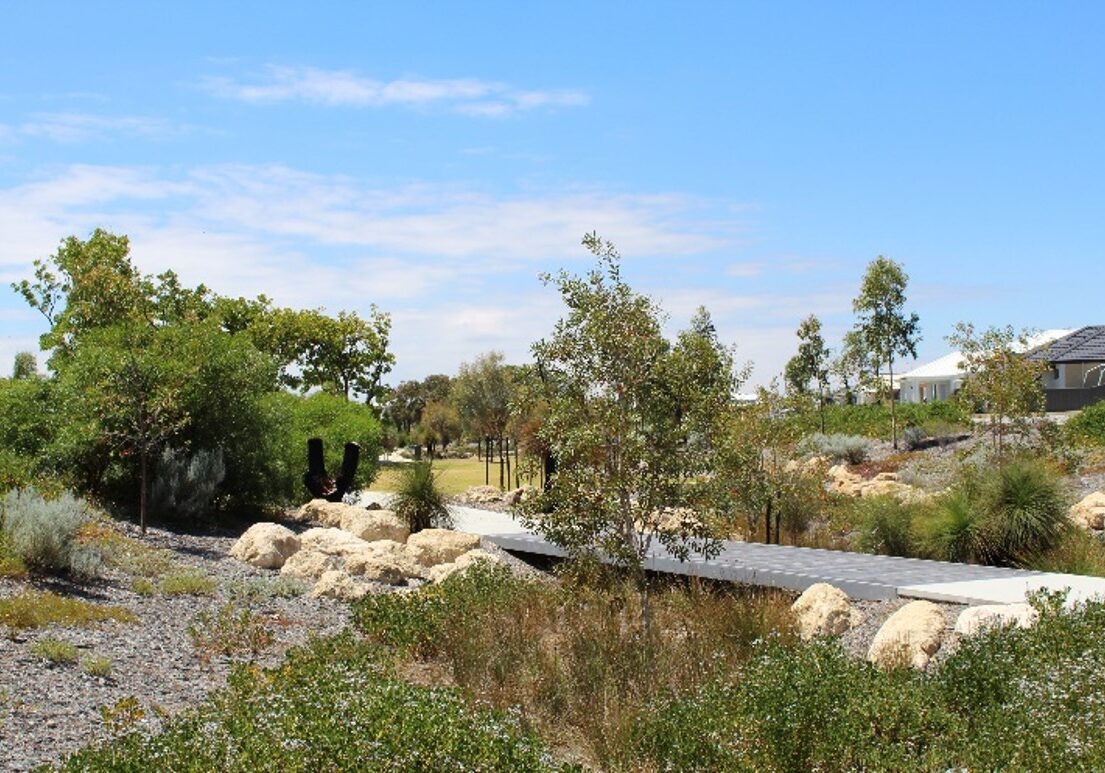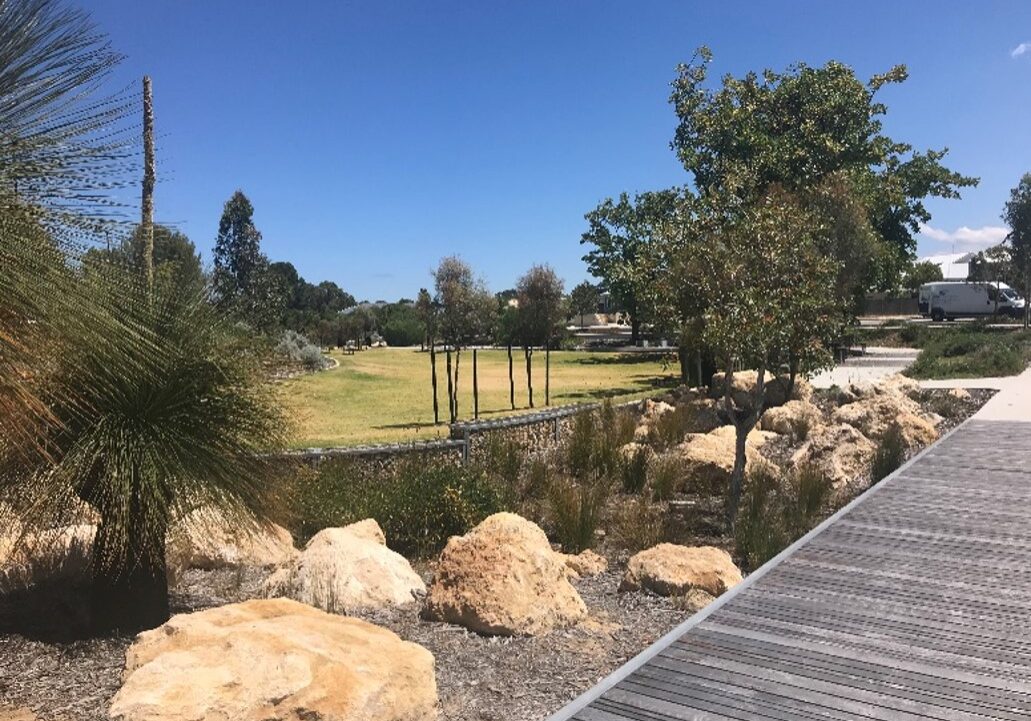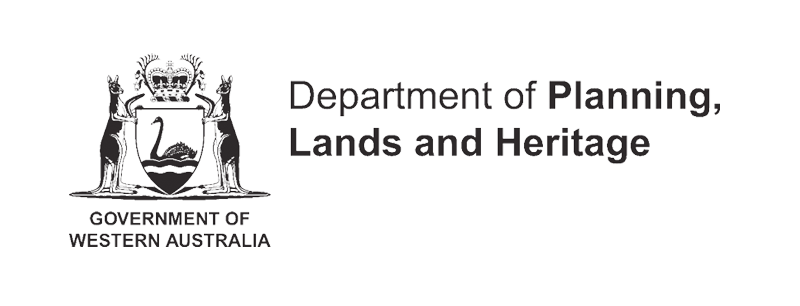Water sensitive urban design is a contemporary approach to managing the urban water cycle through integration into the natural and built landscape. It is a planning and design approach that incorporates the sustainable management and integration of stormwater, groundwater, wastewater and water supply into the built form to achieve water and environmental outcomes as well as aesthetic/urban amenity, liveability, and urban cooling outcomes.
These are the outcomes we want;
Healthy Environments - Wetlands, waterways, coasts and vegetation are valued by the community and have access to appropriate surface water and/or groundwater quality and quantity.
Green, liveable places - Communities have access to green streets and built form and functional public open space, supported by equitably shared fit-for-purpose and efficient use and reuse of water resources.
Safe and healthy communities - Communities have access to landscapes that provide social and cultural connections, supporting the mental and physical well-being of the community and protection from flooding where low life-cycle cost infrastructure is coordinated and nuisance insects are managed
WSUD building resilience to climate change;
- Mitigate urban heat particularly in heatwave conditions
- Natural systems and multi-purpose spaces to cope with “flashier” (higher intensity) rainfall events
- Recharge groundwater systems for
groundwater sustainability - Rising sea levels can impact drainage
system efficacy – reduce piped networks - Create urban biodiversity refuges
Please click on the following links to access further climate change policies and documentation relevant to WA:



Our Partners

Department of Lands and Heratige

UDIA

Department of Water and Environment

WALGA

Department of Biodiversity

Water Corporation
